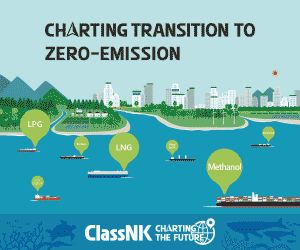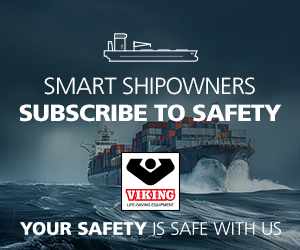The Global Centre for Maritime Decarbonisation (GCMD) has successfully completed a pioneering pilot transferring liquid ammonia between two gas carriers to trial safety protocols and operational guidelines for bunkering at the Western Anchorage WA19 near Port Dampier in Pilbara, Western Australia.
As explained in the “Path to Zero-Carbon Shipping” report, the trial involved the ship-to-ship transfer of 2,700 metric tonnes (MT) of ammonia, equivalent to 4,000 cubic metres (m³), at a rate of 700–800 cubic metres per hour (m³/hr) between the Green Pioneer and the Navigator Global, reflecting realistic metrics for a typical bunkering operation.
The location was selected for its operational advantages, including an existing ammonia terminal, longstanding expertise in ammonia handling, a dedicated large anchorage spanning one nautical mile (NM), and a safe distance of 20 NM from shore.
This pilot marks a significant step forward in demonstrating the feasibility and safety of using ammonia as an alternative marine fuel, supporting the maritime industry’s decarbonisation efforts. The trial focused on addressing aspects of the technical, logistical, safety, and regulatory requirements associated with ammonia bunkering within an operating port’s anchorage.
Comprehensive safety studies were structured around four key areas:
- Feasibility: Assessments were conducted on site conditions, vessel compatibility, mooring arrangement, response motions, operational windows, and other constraints to simulate ammonia bunkering at anchorage.
- Risks: The identification and evaluation of potential hazards were carried out through hazard identification (HAZID) and hazard and operability study (HAZOP) workshops.
- Consequence: Modelling credible ammonia release scenarios shed light on their potential impact on personnel, port infrastructure, and the surrounding environment.
- Response: An evaluation of emergency preparedness and response capabilities was undertaken with pilot participants. The findings and recommendations were presented to local agencies such as Pilbara Port Authority (PPA), Australian Maritime Safety Authority (AMSA), the Department of Transport (DoT), and the Department of Fire and Emergency Services (DFES), who provided guidance on operational safety.
The findings across all four study areas confirmed that ship-to-ship ammonia transfer at anchorage can be both safe and practicable, provided that recommended safeguards and operational controls are implemented.
Key highlights from the safety studies include:
- Response motions analysis using historical metocean data (August to November 2023) revealed a critical roll motion threshold of four degrees to prevent bridge wing collisions for this pair of handysize and midsize gas carriers. The safe wave limit was 0.88 metres (m), with a wave period between 9 and 11 seconds (s). Mooring analysis indicated a maximum wind speed of 20 knots and a maximum swell height of 0.3 m for safe operations. Mooring loads were capped at 50% of the line’s mean breaking load (MBL), around 211–265 kilonewtons (kN), and 3,015 kN for fender systems.
- Risk assessments, including HAZID and HAZOP, revealed no high-level risks. HAZID identified 15 medium and eight low risks; HAZOP identified eight medium and three low risks. Risk levels were reduced through safety measures and additional controls such as Vessel Separation Detection (VSD) devices, Emergency Release Couplings (ERC), avoiding simultaneous operations (SIMOPS), scheduling fire and spill drills closer to the operation date, and deploying a standby incident response vessel. A task-based risk assessment (Task and Safe Job Analysis), conducted during the Joint Plan of Operations (JPO), confirmed the comprehensiveness and appropriateness of the mitigation strategies.
- Computational Fluid Dynamics (CFD) plume dispersion modelling simulated a release of 33 m³ of ammonia (four times the most credible worst-case scenario), under bow and transverse wind directions. The Acute Exposure Guideline Level 3 (AEGL-3) plume—representing 1,600 parts per million (ppm) of ammonia—ranged from 750 to 1,300 m at wind speeds of 1, 5, and 10 metres per second (m/s). These remained within the 1 NM anchorage boundary. The plume persisted for up to 30 minutes under base case conditions (10 m/s) and up to 60 minutes in low-wind scenarios (1 m/s). Modelling also described the plume’s height, width, and distance over time, shaping the emergency response plan (ERP) and evacuation protocols.
- Emergency response measures were guided by onboard procedures and dispersion modelling insights. The plan included communication protocols with authorities, a personal protective equipment (PPE) matrix for each operational stage, appointment of a key incident handler, and verification of onboard spill kits and firefighting systems. Ammonia-specific emergency drills were conducted in the days leading up to the trial to reinforce crew readiness for a range of contingencies.
The trial demonstrated the feasibility of ammonia transfer and provided valuable learnings to support the development of future ammonia bunkering frameworks. Key takeaways highlighted the importance of thorough planning, infrastructure readiness, vessel compatibility, and clear communication among all stakeholders.
This trial represents a significant step towards establishing ammonia as a viable low-carbon marine fuel. The real-world data and insights documented in this report serve as a practical framework to refine best practices for scaling ammonia bunkering globally. It is GCMD’s aim that these findings will build confidence among stakeholders and regulatory bodies, ultimately contributing to the broader adoption of ammonia as a marine fuel.
In the past, bunkering guidelines took years to develop and were typically derived from experience with actual operations. In this case, guideline development is preceding actual commercial-scale operations, making it all the more important that these trials are as informative and comprehensive as possible so they can serve as a relevant reference for industry bodies in refining safe handling procedures, emergency response plans, and operational guidelines
… said Professor Lynn Loo, CEO of GCMD.
To remind, in July 2024, GCMD published a guide to inform interested parties of the dangers of ammonia when it is released at sea.


































































A few months ago I received a questionary about ammonia as substitution to fossil fuel I replaied to all question, there was my concern to safety to the crew and ship, only.
Reading GCMD above aticle, all safety measures have been taken.
Crew (engine and deck as well) have tobe educated and obtain a STCW certificat.
A few years ago I was returning from city to the port to my ship, passing by the terminal abt 200-300 m from one ship (loading or discharging), ammonia leaking. I hardly managed to escape , running with my fist over my nose.
Copper , bruss and their and their alloy must not be in contact with ammonia.